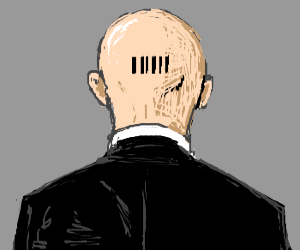What Does 3 To 1 Odds Mean
- What Does 3 To 1 Odds Mean In Horse Racing
- Understanding Odds Racing Explained
- What Does 3 To 1 Odds Mean
- What Does The Odds 3 To 1 Mean
Feb 28, 2021 A fractional listing of 6/1 (six-to-one) odds would mean that you win $6 against every $1 you wager (in addition to receiving your dollar back, i.e. $1 – the amount you wagered).
For example, the odds of your favorite football team losing a match maybe 1 to 5. The odds of you winning a lottery might by 1 to 10,000. On the other hand, the odds of the horse you bet on winning the race may be equal to 4 to 3. What do these numbers mean? There are two types of odds ratios: 'odds of winning' and 'odds of losing'. Dec 26, 2019 If you were betting on the Patriots and their 3/1 odds, you would win $3 for every $1 you spend. So if you bet $50 on the Pats and they ended up winning the Super Bowl, you’d win $150 (plus your. Now when a gambler says that the odds are 3to1, they mean that there are 3 chances to win to 1 chance to lose. Alternatively, the gambler express this as the chance is 3in4, that is, 3 chances to win in 4 total chances.

“Wait, why does this NFL team have a -235 next to its name? What’s with New England Patriots (-15) vs. Miami Dolphins (+15)? Help! HEEEELPPPP!”
If that sounds like you, we’re here to assist you. If you’ve stared at a board at a sportsbook or just seen spreads and moneylines on the Internet and been utterly confused, don’t worry. It’s not just you. Those numbers can be confounding.

But hopefully, once you’re done reading this, you’ll completely understand how they work. As you prepare to dive into the world of sports betting, here’s a breakdown of how the lines work, starting with …
Spreads
It would be really easy to bet on a game if you could put money on a heavy favorite to win.
That’s where point spreads come in. Let’s look at an example:
Philadelphia Eagles (-4.5)
New York Giants (+4.5)
In this case, you can bet on either two outcomes: you can put money on the Eagles to win the game by 4.5 points OR MORE, which makes them the favorites. Or you can bet that the Giants will either win or lose by LESS THAN 4.5 points. They’re the underdogs.
Now, sometimes the spread “moves” during the days leading up to the game. Perhaps the Eagles’ spread ends up being -3.5 (in which they must win by 3.5 points or more to give you a victory in your bet). Your bet all depends on whichever spread you bet on, whether it was when the Eagles were favored by 4.5 or 3.5 points.
If you ever see “PK” or “pick” next to a team, it means there’s no spread and you can bet on who will win, no matter what the score is.
What Does 3 To 1 Odds Mean In Horse Racing
Moneylines
Let’s take that same example above but use moneylines:
Philadelphia Eagles (-200)
New York Giants (+150)
The team with a minus symbol is the favorite, and the number is how much money you would need to bet to win $100. In this case, you would have to bet $200 on the Eagles in order to win an additional $100.
The Giants are the underdogs. If they’re +150, that means you could bet $100 to win $150.
Note that you can bet any amount you want, but those numbers are always calculated and posted the same way, either in how much money you would need to wager to win $100 or how much money you could win by wagering $100.
Odds
If you’re betting on something like the team who will win the Super Bowl in the future, you might see it look like this:
New England Patriots — 3/1
Baltimore Ravens — 5/1

Kansas City Chiefs — 8/1
If you were betting on the Patriots and their 3/1 odds, you would win $3 for every $1 you spend. So if you bet $50 on the Pats and they ended up winning the Super Bowl, you’d win $150 (plus your original wager) back.
Good luck!
Point spread betting is the most popular form of sports betting. The vast majority of sports wagers use a point spread thanks to the popularity of football and basketball. Even though this type of betting is so popular, it may take awhile to understand.
Understanding Odds Racing Explained
The point spread is sometimes known as an equalizer for sportsbook operators. All teams aren’t created equally, so sportsbooks can create a point spread for a game so that each team playing has an almost even chance of winning the game. In a way, the point spread will even the field for both teams.
The point spread gives a reason for bettors to risk money on both teams. The better team playing in the game is considered favorite. They have to win by the point spread offered by the sportsbook. The favorite in a game is listed as being minus (-) the point spread.
The worse of the teams playing in the game is called the underdog. The bettor wins if this team wins the game outright or loses by an amount smaller than the point spread. The underdog in a game is listed as being plus (+) the point spread.

Let’s use this past Super Bowl between the Tampa Bay Buccaneers and Kansas City Chiefs as an example.
Using this example, the Chiefs were 3-point favorites over the Buccaneers. The Chiefs needed to win by 4 or more points to cover the spread.
What Does 3 To 1 Odds Mean
Likewise, the Buccaneers were 3-point underdogs. That means the Buccaneers needed to win the game outright or not lose the contest by 4 points or more. At Chiefs -3, if they won by exactly 3 points, the betting result would have been a “push” and bettors for both sides would have gotten their wagers refunded.
What Does The Odds 3 To 1 Mean
The Buccaneers pulled off the upset, winning by a score of 31-9, and rewarded bettors who backed them at +3.
Point spread betting odds
Point spreads are usually set with -110 odds, but pricing often fluctuates at online sportsbooks. This is the sportsbook operators’ house edge. The odds guarantee the sportsbook operator will see a little money over time. When the odds are set at -110, the bettor must wager $110 to win $100 (or $11 to win $10).
The odds on a point spread are most commonly known as the vigorish or “vig” for the sportsbook. You might hear this small profit margin for the sportsbook called the “juice” by some sports bettors.
Point spread FAQs
What does ‘pick em’ or ‘pick’ mean in NFL betting?
A “pick em” (sometimes seen as “pick”) is when the teams have a point spread of zero, meaning neither team is favored. In this instance, you’re essentially picking moneyline and your bet will be determined on the winner alone.
What does -7 and +7 mean in NFL betting?
A spread of minus-seven (-7) means that a is favored to win the game by a touchdown (technically, a touchdown and the extra point). A team favored by -7 must win the game by eight or more points to win the bet. If the team wins by seven, the result is a “push” and the bet is refunded.
A spread of +7 means the team must win the game or lose by fewer than seven points to win the bet. A loss by seven would result in a push.
What does -3 and +3 mean in NFL betting?
A -3 spread means that the favorite must win by more than a field goal to win the wager. A three-point win would result in a push and the sportsbook would refund the wager.

A spread of +3 means the team listed as the underdog must win the game or lose by fewer than three points to cash the bet. A three-point loss would be graded as a push by the sportsbook and the bet would be refunded.
Why are point spreads in the NFL so much lower than in college?
In 2019, the Baltimore Ravens led the NFL in point differential per game at +13.7 points; the Miami Dolphins ranked last in the NFL in point differential per game at -11.7. Even Kansas City– known for their explosive offense– had an average point differential in 2019 of just 9.7 points. The net point differential in the NFL is -14.1, or -0.9 points per game. Basically, the talent differential in the NFL is so minute that even mismatched teams often draw games within a score of each other.
NFL spreads are most commonly between one point and four, with six being a heavy favorite and extremes coming out around 15-20 point favors. (For those wondering, the 1941 Chicago Bears hold the NFL record of point differential at +15.7 points per game. Conversely, Ohio State had a +33.1 average point differential in 2019.)
Point spread and odds movement
Sportsbook operators often aim to have equal money on both sides of a point spread. When the money is exactly split the sportsbook operator will see the exact vigorish as their profit margin. If all things are equal over time this will maximize how much money the sportsbook operator can make.
In an effort to have equal money on both sides of a wager, the sportsbook operator will move the point spread to attract money on the side that customers aren’t betting on. The odds for a point spread might change before the actual point spread. There are certain point spread numbers, like 3 and 7 in football, the sportsbook operators would like to avoid moving away from since the final score margin falls on these two numbers most often.
For example, if a lot more money is wagered on the New England Patriots -3, the vig may shift from -112 to -115 and -120 before the line moves to -3.5.
Run and puck lines
Football and basketball games are mostly bet using a point spread. The less popular major sports, baseball and hockey, are mostly bet using a moneyline. In an effort to make baseball and hockey more appealing to point spread bettors, the sportsbook operators offer run and puck lines, respectively.
These alternative lines give point spread bettors a chance to wager on other sports using a more familiar method of betting. Since points (runs and goals) aren’t as easy to come by in baseball and hockey, the odds with the lines may have a wider spread than a football or basketball game.



